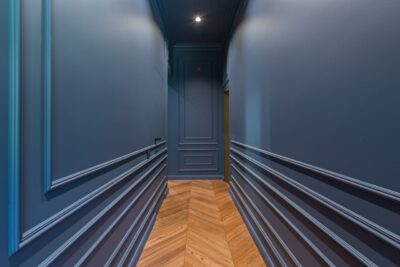Every season brings its own challenges for homeowners. While summer heat can make interiors stifling, winter often brings chills and dampness that test your home’s insulation and comfort systems. In cities like Folsom, CA, where summers are extremely hot and winters are cold and wet, finding a balance is essential. Your home should feel just right, no matter what the weather brings.
This article will guide you through practical ways to keep your home comfortable throughout the year, covering everything from heating and cooling systems to insulation and more.
Rely on a Heat Pump for All-Season Comfort
A heat pump is one of the best solutions for keeping your home comfortable in every season. It’s a single system that heats during winter and cools during summer, offering both efficiency and convenience. For homeowners in Folsom, CA, this is especially beneficial because of the city’s wide temperature swings. During winter, the heat pump pulls warmth from the outside air and brings it indoors. When the weather turns hot, it reverses the process, moving warm air outside to cool your home. This simple transfer of heat uses less energy than traditional systems. For reliable performance, it’s crucial to hire experts for heat pump installation in Folsom, CA. Professional installation ensures the system runs smoothly and keeps your home comfortable through every season.
Improve Home Insulation
Insulation is one of the most effective ways to maintain a steady indoor temperature. If your home loses heat in the winter or cool air in the summer, chances are your insulation needs attention. Areas like the attic, walls, and floors are key places where heat can escape or enter. Adding or upgrading insulation creates a barrier that keeps your home’s internal climate stable. When your insulation is effective, your HVAC system doesn’t have to work as hard, which reduces energy use and utility costs. You’ll also notice fewer drafts and a quieter indoor environment since insulation helps block outside noise.
Seal Drafts and Air Leaks
Even the most advanced heating and cooling systems can’t perform well if your home has air leaks. Small gaps around windows, doors, and vents allow indoor air to escape and outdoor air to come in. These leaks make your HVAC system run longer and use more energy to maintain the desired temperature. You can fix this by applying caulk to seal cracks and using weatherstripping around doors and windows. Doing so helps your home retain warmth during cold months and stay cool during hot ones.
Maintain Your HVAC System Regularly
Your HVAC system works hard throughout the year, and it needs regular maintenance to perform at its best. Dirty filters, clogged vents, or worn-out components can reduce airflow and force the system to work harder than necessary. Replace air filters every few months, especially during seasons of heavy use. Schedule professional maintenance at least once a year to check refrigerant levels, clean coils, and ensure that all parts are in good condition. A well-maintained system not only provides better comfort but also lasts longer and helps you avoid sudden breakdowns during extreme temperatures.
Optimize Window Treatments
Windows can be both a source of beauty and a cause of discomfort if they aren’t managed properly. During summer, sunlight entering through windows can quickly raise indoor temperatures. In winter, poorly insulated windows can let warm air escape. Installing insulated curtains, cellular shades, or energy-efficient blinds helps control indoor climate more effectively. Close the curtains during the hottest hours of the day to block heat and open them when it’s cool to allow natural ventilation. In colder months, let sunlight in during the day for warmth and close curtains at night to retain heat.
Use Smart Thermostats
Smart thermostats have become a staple for modern homes, and for good reason. They give you control over your indoor climate with ease and precision. You can set temperature schedules for different times of day. Some models even learn your habits over time, adjusting automatically to your preferences. The ability to control settings from a smartphone adds another layer of convenience—whether you’re returning from work or heading out on a trip. By maintaining consistent temperatures and preventing unnecessary heating or cooling, a smart thermostat improves comfort while reducing energy consumption. It’s one of the simplest yet most effective upgrades any homeowner can make.
Keep Humidity Levels Balanced
For a home to offer complete comfort, humidity levels need to be kept in check. When humidity is too high, the air feels heavy and sticky. It can also promote mold growth and damage furniture or walls. On the other hand, air that’s too dry can cause skin irritation, cracked wood, and increased static. Striking the right balance—typically between 30 and 50 percent—keeps the environment pleasant and healthy. During summer, a dehumidifier helps remove excess moisture, making your air conditioning more effective. In winter, a humidifier restores moisture that’s lost due to heating. Together, these tools create a more breathable indoor atmosphere, ensuring you stay comfortable in every season.
Inspect the Roof and Gutters
Neglecting your roof and gutters as the weather changes can lead to leaks, water buildup, and insulation problems that affect indoor comfort. Before the rainy or snowy seasons arrive, check your gutters for blockages and clear any leaves or debris. Inspect the roof for missing shingles, cracks, or areas where moisture might seep in. Even small problems can worsen quickly if ignored. Regular inspections prevent damage and maintain the home’s ability to regulate temperature effectively. Proper roof care also protects your insulation from getting wet, which ensures your heating and cooling systems don’t have to work overtime.
Comfort at home is not something you achieve once and forget—it’s a habit built through care and consistency. The choices you make shape how your home responds to the world outside. Each step creates a living space that supports your daily rhythm and well-being. When you invest attention in these details, you’re not just maintaining a property; you’re shaping an environment that protects, nurtures, and reflects the way you live.








